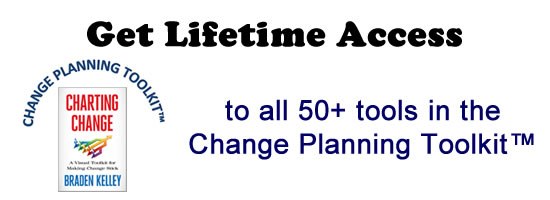How to build effective strategy even in constant change
 Strategy is More Important than Ever
Strategy is More Important than Ever
Many have pronounced “Strategy is dead.†Citing the speed with which new technologies are emerging and the perpetual changes to market conditions, consultants and executives alike are claiming that it is no longer possible to craft a meaningful long-term strategy. “Strategy†must be adaptable and ever-evolving. The word has become a euphemism for short-term plans intended to guide organizations their leaders hope are agile.
In reality, the rapidly changing, volatile, uncertain, ambiguous, and complex nature of modern markets has made strategy both more important than ever and, in some ways, easier.
To meaningfully discuss strategy, it is imperative to clarify what the word means and what we are talking about. Regrettably, the word “strategy†is now most commonly used to describe any plan intended to produce an important outcome. Plans are called strategies irrespective of if they were created considering any issues beyond a basic sequence of execution. This common use of the word is in no small part the reason for the perceived futility of long-term strategy. Plans must change to address unexpected conditions, competitive activity, and new technologies. Plans regularly fail. If every plan is a strategy, however, and the word is just a synonym for “plan,†then the concept has no practical value or use. But this is not the case.
What Makes a Winning Strategy
A strategy is not a plan. A strategy is a statement of intent with very specific properties. To qualify as a strategy, the statement must describe a focus for activity and an implicit or explicit set of conditions for an end state that, when successfully executed, guarantee the organization will achieve its desired goals. Good strategies ensure that the goal will be achieved irrespective of any reasonably foreseeable competitive activity or probable change to an arena activity. A well-crafted strategy, successfully executed, will guarantee a desired outcome irrespective of anything but a black swan event completely outside the scope of even robust scenario planning.
In addition, when expressed, all good strategies manifest several key characteristics. They are:
- easily understood and explained
- provide sufficient detail regarding a key purpose to provide clear prioritization and guidance but are not so detailed as to restrict how teams and leaders with distributed authority choose to execute
- are a useful tool in decision making and resource allocation in all specific areas of activity conducted by an organization
- make self-evident or intuitive what a stakeholder should not do as well as what they should do
- allow for arena specific strategies to be defined that are universally aligned with the overall higher level or organizational strategy
Often when I put forward this definition, people balk at the notion that an outcome can be “guaranteedâ€. They then become positively disparaging when they see “irrespective of competitive activity…or changes to a market.†But great strategies, and there are many examples throughout both military and business history, have always satisfied this definition. While black swan events and poor execution can always lead to failure, the goal of anyone crafting a strategy, at any level, should be the simplest expression of a method paired with an achievable end state or directed purpose that will guarantee success.
Examples of Winning Strategies
Let’s look at some examples, one from geopolitical history and several commercial examples. First, the Allied strategy of WWII. This was simple and clear; “Self-preservation. Starve the enemies war machine.†This strategy meets all of the criteria of our definition. Despite setbacks, problems with execution, and fierce competitive activity, by the end of the war, the average Allied soldier had 2 tons of supply accessible to them or on the way in the supply chain. The average Axis soldier had less than 2 kilos. Victory for the Allies had been made inevitable long before hostilities ended. It’s just that neither side realized. Despite changing conditions during the war, this strategy did not change while arena specific plans changed or were adapted regularly.
Cisco’s early acquisition strategy is another good example. “Acquire companies that own or are developing the key technologies required for each step or component in the burgeoning IT network market.†This was further bounded by a rule to ensure a focus on acquiring leading and new technologies, “acquire companies with no more than 75 employees, 75% of whom are engineersâ€. Computer networks were and are mission-critical systems for most businesses. If any component failed, people couldn’t communicate and information stopped flowing. By buying the companies that owned and produced the best new technologies for each component in a network, Cisco could ensure its products were included in nearly every project implemented as well as those that would be implemented in the foreseeable future. By controlling the development of future generations of key technology products as well as providing leading components now, it was able to substantially influence or control the standards established for all network products sold. This strategy, effectively executed, guaranteed Cisco would achieve its objectives. It produced an end state for the ecosystem in which Cisco products were included in nearly every solution sold and its influence over specifying technical standards would ensure it could maintain that lead.
Proctor & Gamble’s longtime strategy to “constantly improve on market-leading products that make lives better and sell them using great brands†continues to be highly effective. By focussing on making already market-leading products better, Proctor & Gamble ensures that its brands are always associated with the value, quality, and the certainty of being both a safe purchase and the best available solution for a need. Effectively executed, this strategy prioritizes resources on just two things and these two things produce the ultimate advantage within a fast moving consumer goods market.
In all three cases, rapidly changing technology or market conditions may require arena specific plans to change. But a constant prioritization of resources to achieve the strategy guaranteed or at least maximised the probability of successfully achieving the desired outcomes.
Since the beginning of recorded history technologies, conditions, and methods have changed. In relative terms, sometimes at often unprecedented rates. Competent leaders have nonetheless crafted sound strategies that reduced uncertainty, empowered rapid and distributed decision making, enabled effective prioritization of resources, and ultimately that were fundamental to their success. For the best of these leaders, tactical plans changed frequently, but their strategy remained constant over extended periods of time. The same is true today. An effectively crafted strategy does not need to change and yet will dramatically reduce risk while facilitating better, faster, and easier decision making throughout an organization.
For more details on useful tools and methods, a better understanding of consumer decision making, innovation success, how to remove bias from internal decision processes, craft more effective and safer incentive programs and strategies, or for more details on the science of Motivational Drive Theory, (1) read A Deeper Truth: The new science of innovation, human choice, and societal scale behavior (2) sign up and read other installments of Tim Stroh’s Value In 60 Seconds or Under 3 Minutes email and blog, or (3) if you would like assistance make contact to arrange a discussion, workshops, keynote presentation, or services engagement via LinkedIn (https://linkedin.com/in/timstroh) or tim@strohinternational.com.
For optimal results, find and recruit ex U.S., U.K., or Australian military personnel who are well versed in the approaches and tools used by the military services to further organizational learning, innovation, and command structures that are accompanied by rapid action cycles.
Wait! Before you go…
Choose how you want the latest innovation content delivered to you:
- Daily — RSS Feed — Email — Twitter — Facebook — Linkedin Today
- Weekly — Email Newsletter — Free Magazine — Linkedin Group
 Tim Stroh is a successful innovator, author and speaker. He has taken software-as-a-service (SaaS) startups from idea through to multimillion-dollar trade sale, lead the R&D efforts of market-leading consumer product manufacturers, and is the award-winning author of A Deeper Truth: The new science of innovation, human choice and societal scale behavior. Tenaciously curious, he is known for his engaging speaking, his ability to bring together and make relevant radically diverse topics, and as a catalyst for objectivity.
Tim Stroh is a successful innovator, author and speaker. He has taken software-as-a-service (SaaS) startups from idea through to multimillion-dollar trade sale, lead the R&D efforts of market-leading consumer product manufacturers, and is the award-winning author of A Deeper Truth: The new science of innovation, human choice and societal scale behavior. Tenaciously curious, he is known for his engaging speaking, his ability to bring together and make relevant radically diverse topics, and as a catalyst for objectivity.
NEVER MISS ANOTHER NEWSLETTER!
LATEST BLOGS
Three things you didn’t know about credit cards
Photo by Ales Nesetril on Unsplash Many of us use credit cards regularly. From using them for everyday purchases to…
Read MoreFive CV skills of a business-minded individual
Photo by Scott Graham on Unsplash The skills listed on a CV help employers quickly understand your suitability for a…
Read More


